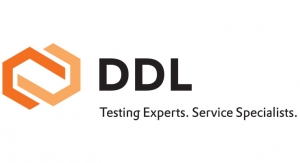Emily Newton, Editor-in-Chief, Revolutionized02.16.21
The medical device manufacturing industry—like most others—is recovering from one of the most challenging years in recent memory. Manufacturers across the sector had to manage disruptions to demand, an unstable supply chain, and new workplace safety practices.
Now, economists say the economy may begin to recover in the second half of the year as vaccine deployment proceeds. Recovering consumer confidence and a more stable supply chain will hopefully provide more predictable economic conditions than those the industry experienced in 2020.
At the same time, changes that arose during the COVID-19 pandemic—like the growing use of innovative materials and the demand for remote medical devices—could have a lasting impact on medical device manufacturing, even as the pandemic begins to subside.
These trends are some of the most likely to shape medical device manufacturing’s future in 2021—and they may also have significant impacts well into the decade.
1. Growing Demand for Remote Medical Devices
In the early days of the COVID-19 pandemic, many healthcare providers began offering telemedicine services to reduce unnecessary in-person visits. Now, many of those providers plan to continue offering these services after the pandemic subsides.
Federal healthcare agencies are also expanding their use of telehealth and telemedicine. The Centers for Medicare and Medicaid Services, for example, announced it would make permanent many Medicare telehealth services they expanded in the early days of the COVID-19 crisis.
While telehealth and telemedicine services likely won’t be the norm post-COVID-19, they will be much more common. For medical device manufacturers, this could mean growing demand for devices that can provide data remotely or without an in-person patient visit.
Smart medical alert systems, remote blood glucose monitors, and maternity care platforms are just a few examples of solutions and devices healthcare providers are requesting.
This new demand could provide a major opportunity for businesses that already manufacture remote health devices—as well as those manufacturers who wish to expand their offerings to include remote monitoring tools, platforms, and solutions.
2. Product Launches Shift From EU to U.S.
On May 21, 2021, the new EU Medical Device Regulation (MDR) will go into effect. The MDR, the successor to the 1994 EU Medical Device Directive (MDD), has been interpreted by many manufacturers as more stringent than the FDA’s current regulatory standards.
For manufacturers whose devices have existing MDD certifications, not much will change. They’ll still have until 2024 to prepare devices for new MDR certifications. Manufacturers seeking to launch new products in the EU, however, may face new challenges while seeking CE marks for those devices.
At the same time, FDA (Food and Drug Administration) deregulation from the past few years has made U.S. approval slightly easier to obtain. In 2019, for example, the agency announced a new set of Class I and Class II devices that would be exempt from premarket notification requirements.
In the past, many manufacturers looking to launch new products often started with the EU market. Now, manufacturers could look to other major markets with regulations that may be easier to comply with when launching new products.
The U.S. may now be one of the best available markets for this purpose—and could lead to a shift away from the EU market to the U.S. for product launches.
Shifting from the EU to the U.S. could also give manufacturers more time to prepare for the upcoming In Vitro Diagnostic Regulation (IVDR), which updates the In Vitro Diagnostic Directive (IVDD). The IVDR is set to come into effect in 2022.
European medical manufacturers have urged the EU to postpone implementation of IVDR in light of the coronavirus pandemic. They argue that due to COVID-19’s disruption, they may not be able to comply if the regulations go into effect on the current planned date.
As of now, however, it seems unlikely that the current deadlines for the IVDR or MDR will be delayed.
3. New Materials and Designs
Over the past few years, medical devices have become more complex both in design and materials used. As a result, many manufacturers have also begun searching for ways to cut down on material costs and speed up the manufacturing process.
For example, surging syringe demand amidst the COVID-19 vaccine rollout was a major win for manufacturers of plastic pre-filled syringes. These plastic syringes are typically less costly and quicker to manufacture than pre-filled syringes made of conventional materials, like glass.
Similarly, we may see manufacturers use more innovative materials and experiment with product design to reduce manufacturing costs and improve device safety in 2021.
Materials like parylene and similar polymers, which are commonly used as coatings for electronic devices, are also effective for biomedical applications. They provide unique benefits—for example, providing extra resistance against bio-corrosion for devices that must be in contact with skin or bodily fluids.
Experimentation with advanced materials like parylene could drive better and more cost-effective product design in the medical manufacturing sector.
4. Robotics and Automation
The COVID-19 pandemic did no favors to the already tight medical manufacturing labor market.
Now, more than ever, manufacturers are looking to increase their adoption of robotics and automated solutions as a way to spare skilled workers from tedious manual labor. Doing so also helps manage growing labor costs and new difficulties in recruiting medical manufacturing workers.
In some cases, automation has also helped manufacturers adjust to rapidly shifting demand. For example, one manufacturer of syringes partnered with a manufacturer of automated solutions to streamline and handle the syringe manufacturing process during the COVID-19 vaccine rollout.
Collaborative robotics (“cobots”) may also be essential to future industry success. Many manufacturers are benefitting from new, AI-based technologies like machine vision—which uses a computer algorithm to help analyze visual data—to provide highly accurate metrology.
These Trends May Reshape the Medical Manufacturing Market in 2021
After the economic slowdown and uncertainty of 2020, the medical device manufacturing sector may be on track for a year of recovery. The lingering effects of COVID-19 could reshape how the industry performs its work in the short term, and may accelerate the push toward automation and new materials.
Long after the pandemic is over, the sector may also need to respond to new consumer and provider needs that remain in place—like the growing demand for telemedicine and demand for remote medical devices.
 Emily Newton is the editor-in-chief of Revolutionized. She’s always excited to learn how the latest industry trends will improve the world. She has over four years of experience covering stories in the science and tech sectors.
Emily Newton is the editor-in-chief of Revolutionized. She’s always excited to learn how the latest industry trends will improve the world. She has over four years of experience covering stories in the science and tech sectors.
Now, economists say the economy may begin to recover in the second half of the year as vaccine deployment proceeds. Recovering consumer confidence and a more stable supply chain will hopefully provide more predictable economic conditions than those the industry experienced in 2020.
At the same time, changes that arose during the COVID-19 pandemic—like the growing use of innovative materials and the demand for remote medical devices—could have a lasting impact on medical device manufacturing, even as the pandemic begins to subside.
These trends are some of the most likely to shape medical device manufacturing’s future in 2021—and they may also have significant impacts well into the decade.
1. Growing Demand for Remote Medical Devices
In the early days of the COVID-19 pandemic, many healthcare providers began offering telemedicine services to reduce unnecessary in-person visits. Now, many of those providers plan to continue offering these services after the pandemic subsides.
Federal healthcare agencies are also expanding their use of telehealth and telemedicine. The Centers for Medicare and Medicaid Services, for example, announced it would make permanent many Medicare telehealth services they expanded in the early days of the COVID-19 crisis.
While telehealth and telemedicine services likely won’t be the norm post-COVID-19, they will be much more common. For medical device manufacturers, this could mean growing demand for devices that can provide data remotely or without an in-person patient visit.
Smart medical alert systems, remote blood glucose monitors, and maternity care platforms are just a few examples of solutions and devices healthcare providers are requesting.
This new demand could provide a major opportunity for businesses that already manufacture remote health devices—as well as those manufacturers who wish to expand their offerings to include remote monitoring tools, platforms, and solutions.
2. Product Launches Shift From EU to U.S.
On May 21, 2021, the new EU Medical Device Regulation (MDR) will go into effect. The MDR, the successor to the 1994 EU Medical Device Directive (MDD), has been interpreted by many manufacturers as more stringent than the FDA’s current regulatory standards.
For manufacturers whose devices have existing MDD certifications, not much will change. They’ll still have until 2024 to prepare devices for new MDR certifications. Manufacturers seeking to launch new products in the EU, however, may face new challenges while seeking CE marks for those devices.
At the same time, FDA (Food and Drug Administration) deregulation from the past few years has made U.S. approval slightly easier to obtain. In 2019, for example, the agency announced a new set of Class I and Class II devices that would be exempt from premarket notification requirements.
In the past, many manufacturers looking to launch new products often started with the EU market. Now, manufacturers could look to other major markets with regulations that may be easier to comply with when launching new products.
The U.S. may now be one of the best available markets for this purpose—and could lead to a shift away from the EU market to the U.S. for product launches.
Shifting from the EU to the U.S. could also give manufacturers more time to prepare for the upcoming In Vitro Diagnostic Regulation (IVDR), which updates the In Vitro Diagnostic Directive (IVDD). The IVDR is set to come into effect in 2022.
European medical manufacturers have urged the EU to postpone implementation of IVDR in light of the coronavirus pandemic. They argue that due to COVID-19’s disruption, they may not be able to comply if the regulations go into effect on the current planned date.
As of now, however, it seems unlikely that the current deadlines for the IVDR or MDR will be delayed.
3. New Materials and Designs
Over the past few years, medical devices have become more complex both in design and materials used. As a result, many manufacturers have also begun searching for ways to cut down on material costs and speed up the manufacturing process.
For example, surging syringe demand amidst the COVID-19 vaccine rollout was a major win for manufacturers of plastic pre-filled syringes. These plastic syringes are typically less costly and quicker to manufacture than pre-filled syringes made of conventional materials, like glass.
Similarly, we may see manufacturers use more innovative materials and experiment with product design to reduce manufacturing costs and improve device safety in 2021.
Materials like parylene and similar polymers, which are commonly used as coatings for electronic devices, are also effective for biomedical applications. They provide unique benefits—for example, providing extra resistance against bio-corrosion for devices that must be in contact with skin or bodily fluids.
Experimentation with advanced materials like parylene could drive better and more cost-effective product design in the medical manufacturing sector.
4. Robotics and Automation
The COVID-19 pandemic did no favors to the already tight medical manufacturing labor market.
Now, more than ever, manufacturers are looking to increase their adoption of robotics and automated solutions as a way to spare skilled workers from tedious manual labor. Doing so also helps manage growing labor costs and new difficulties in recruiting medical manufacturing workers.
In some cases, automation has also helped manufacturers adjust to rapidly shifting demand. For example, one manufacturer of syringes partnered with a manufacturer of automated solutions to streamline and handle the syringe manufacturing process during the COVID-19 vaccine rollout.
Collaborative robotics (“cobots”) may also be essential to future industry success. Many manufacturers are benefitting from new, AI-based technologies like machine vision—which uses a computer algorithm to help analyze visual data—to provide highly accurate metrology.
These Trends May Reshape the Medical Manufacturing Market in 2021
After the economic slowdown and uncertainty of 2020, the medical device manufacturing sector may be on track for a year of recovery. The lingering effects of COVID-19 could reshape how the industry performs its work in the short term, and may accelerate the push toward automation and new materials.
Long after the pandemic is over, the sector may also need to respond to new consumer and provider needs that remain in place—like the growing demand for telemedicine and demand for remote medical devices.





















